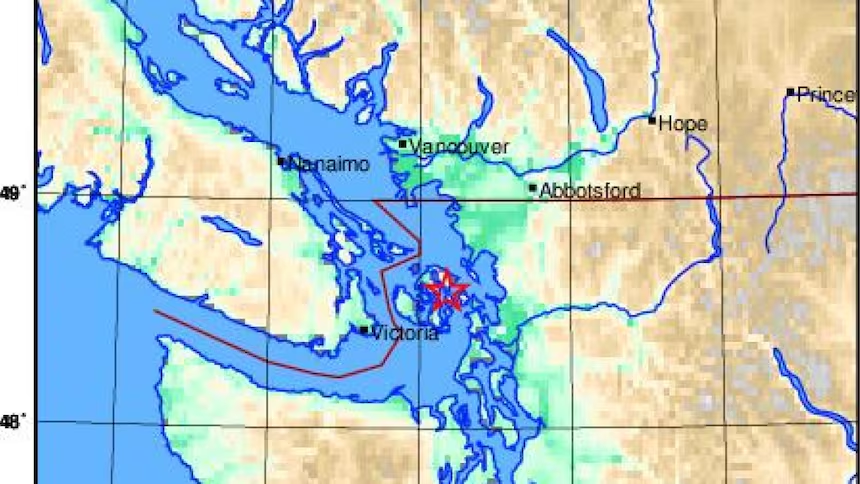A 4.1-magnitude earthquake struck 42 kilometres east of Sidney, British Columbia, early Monday morning. The tremor occurred at 5:02 a.m. PT and was lightly felt across Victoria, Vancouver, and surrounding areas.
The earthquake’s epicentre was near Orcas Island, Washington, located between Vancouver and Seattle, just south of B.C.’s Southern Gulf Islands. It was initially reported as a 4.5-magnitude quake but was later revised to 4.1.
Officials confirmed there are no reports of damage, and a public alert was not issued, as the earthquake’s magnitude and intensity were below thresholds that could cause harm. Authorities also noted there was no tsunami risk.
The tremor follows recent seismic activity in the region, including a 4.7-magnitude earthquake near Sechelt on February 21 and a 5.0-magnitude quake off the coast of Port Alice on February 24.
Many residents on Vancouver Island felt the shaking. Erin Stockill, a member of the Saanich Emergency Program, said it was her first time experiencing an earthquake while on duty. She described being awakened by the shaking early Monday.
John Cassidy, a seismologist with Natural Resources Canada, reported feeling the earthquake from North Saanich, calling it “a bit of a rude awakening.” He noted that the quake occurred at a depth of 15–20 kilometres and was felt from Courtenay down to Tacoma, Washington.
Seismologist Alison Bird explained that while the earthquake was not particularly strong, it was shallow and located near populated areas, which made it noticeable to residents. Larger earthquakes off the coast often go unnoticed because they occur farther from population centres.
Despite multiple earthquakes being felt recently, experts say this activity is normal. Cassidy emphasized that earthquakes occur in the region every day, and recent tremors are not connected to one another.
Residents who experienced shaking are encouraged to report it using Earthquakes Canada’s “Did you feel it?” form. This information helps scientists understand ground motion patterns in urban areas.
The event also serves as a reminder for British Columbians to prepare for future earthquakes. Stockill stressed the importance of practicing earthquake safety measures. The most crucial steps include dropping to the ground, taking cover under a sturdy table or desk if possible, and holding on until shaking stops.
Once the shaking ends, people should wait a full minute before assessing their surroundings. Stockill advised checking emergency supplies, including water, medication, flashlights, and batteries. Residents are also encouraged to consider items specific to their family’s needs to stay comfortable after an emergency.
Annual drills, such as the Great B.C. Shakeout, reinforce earthquake preparedness by teaching residents to “drop, cover, and hold on.” Officials urge British Columbians to maintain these safety habits and keep emergency kits up to date.
Monday’s 4.1-magnitude Sidney area earthquake was a minor event, but experts say it highlights the importance of readiness in a region prone to seismic activity. Authorities continue to monitor the area for further activity and advise residents to stay alert.

